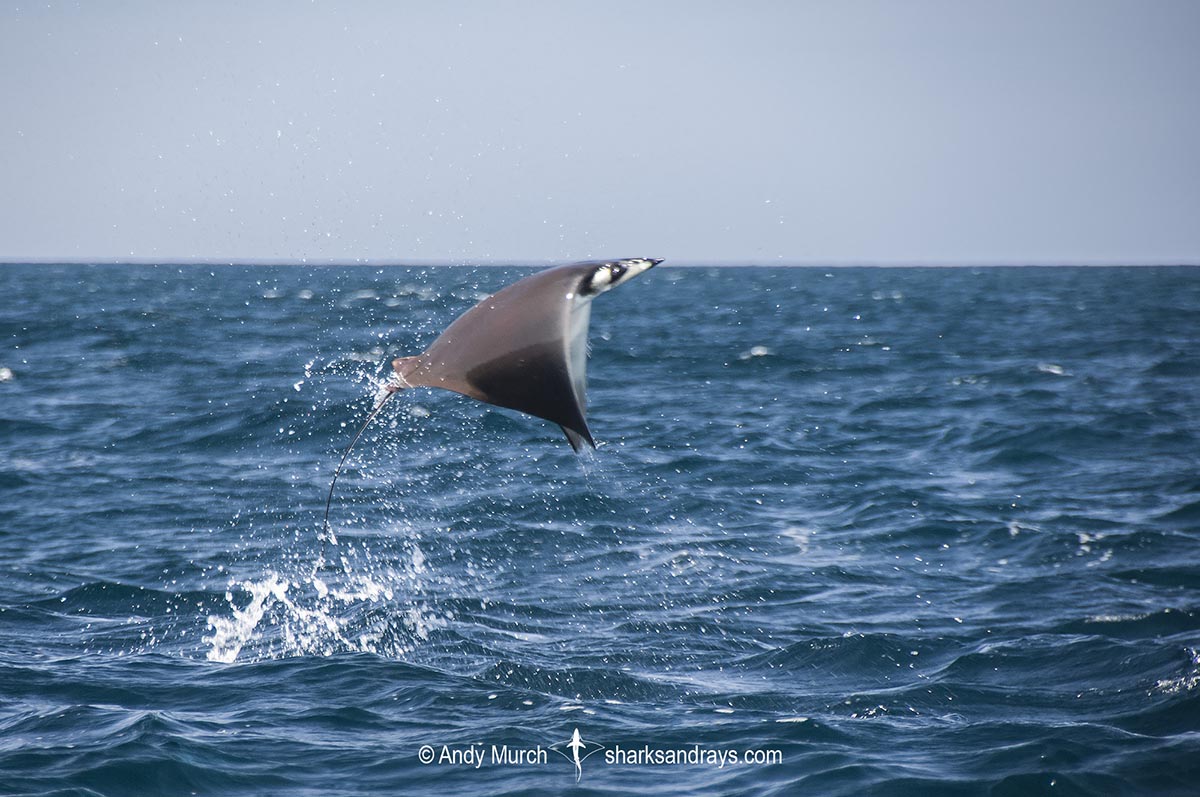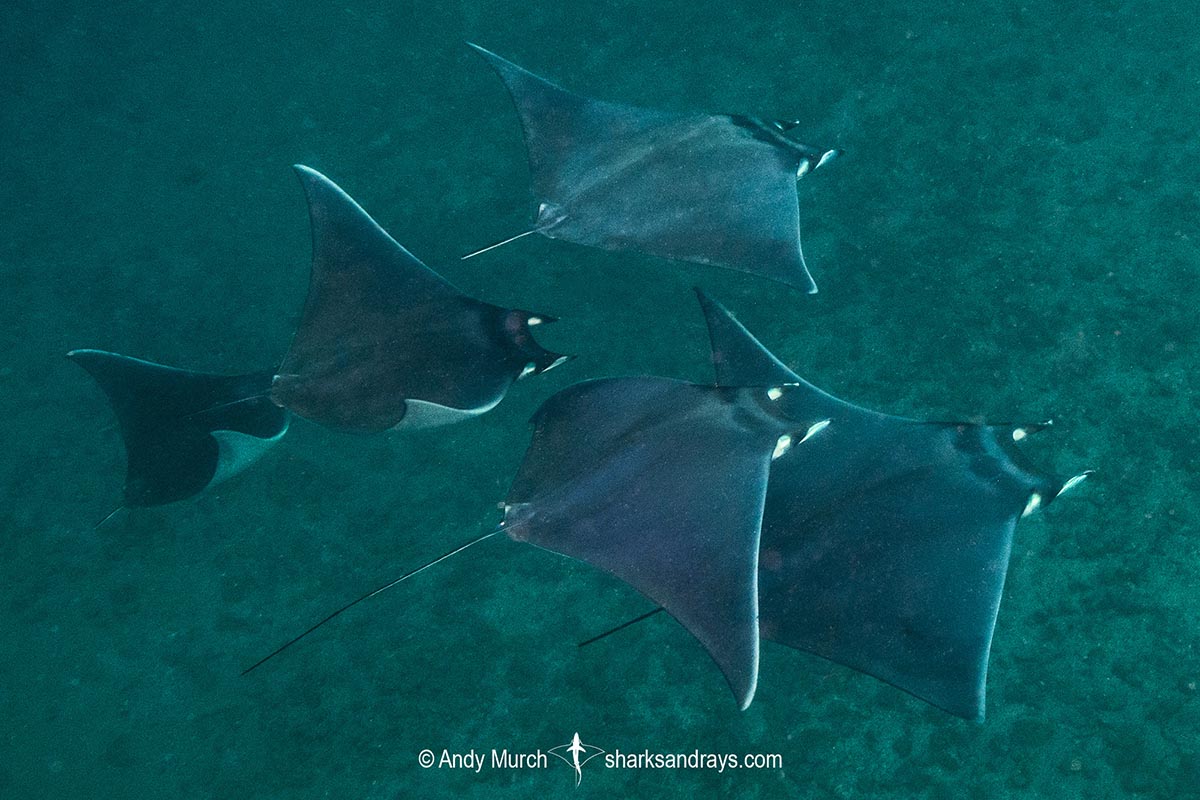Common names
Munk’s Devil Ray, Pygmy Devil Ray, Munk’s Mobula Ray.
Binomial
Mobula munkiana.
Synonyms
None.
Identification
A small mobula ray with a broad, kite-shaped disc and a broad, subterminal mouth. Mouth width 0.11-0.13 x disc width. Upper and lower tooth bands cover approximately 60% of mouth width. Circular spiracles positioned laterally, below pectoral origin. Branchial filter plates separate on each gill arch.
Disc width 1.6-1.8x length. Anterior margins of pectoral fins straight. Pectoral fin apices acutely angular and falcate. Pelvic fins very small. One small dorsal fin present at base of tail; posterior margin straight. Denticles widely spaced. Tail long and whiplike; equal to or greater than disc length when intact. Caudal sting absent.
Colour
Dorsum purplish-grey to brown, with a dark band across upper margin of mouth, and a second wider band posterior to the first. Ventrum white; often with dusky pectoral tips. White tip in dorsal fin; sometimes indistinct.
Size
Maximum disc width 110cm. Disc width at birth approximately 35cm.

Conservation Status
VULNERABLE
The Pygmy Devilray has an extremely low reproductive rate with only one pup per litter. Increasing international trade in gill plates for Chinese medicine has led to an extensive targeted fishery in México and Peru.
Based on distribution data, ease of capture due to its schooling nature, limited productivity, directed and targeted fisheries, extensive depletions are assumed, but no historical population estimates are available. Overall, it is suspected that Munk’s Develray has undergone a reduction of ~30–49% over the last 38 years.

Habitat
Pelagic in tropical/subtropical seas. Usually found in coastal areas but sometimes offshore. Surface to at least 30m.
Distribution
Tropical/sub-tropical eastern Pacific. Found from the Sea of Cortez to Peru including the Galapagos Islands.
Reproduction
Aplacental viviparity. One pup per litter.
Diet
Diet mainly planktonic crustaceans. Predates heavily on mysid shrimps.
Behavior
An active swimmer that forms extremely large aggregations, sometimes in many thousands. Munk’s devil ray is famous for its high aerial breaches. Perhaps as part of a courtship display, many rays often breach in unison or in short succession. In the Sea of Cortez, this behavior has earned them the nickname ‘popcorn rays’.
Reaction to divers
Usually very difficult to approach underwater except during organized feeds.
Diving logistics
Massive schools of Munk’s mobulas are common in the southern Sea of Cortez and around the tip of Baja. Cabo Pulmo is a good spot to watch them breaching but the visibility can make underwater photography/encounters challenging.
There are a few operators in La Paz that arrange night dives where powerful lights are used to attract thick swarms of plankton, which in turn attracts scores of Munk’s devil rays. This is a highly entertaining encounter with opportunities to get extremely close to an otherwise very shy species.




